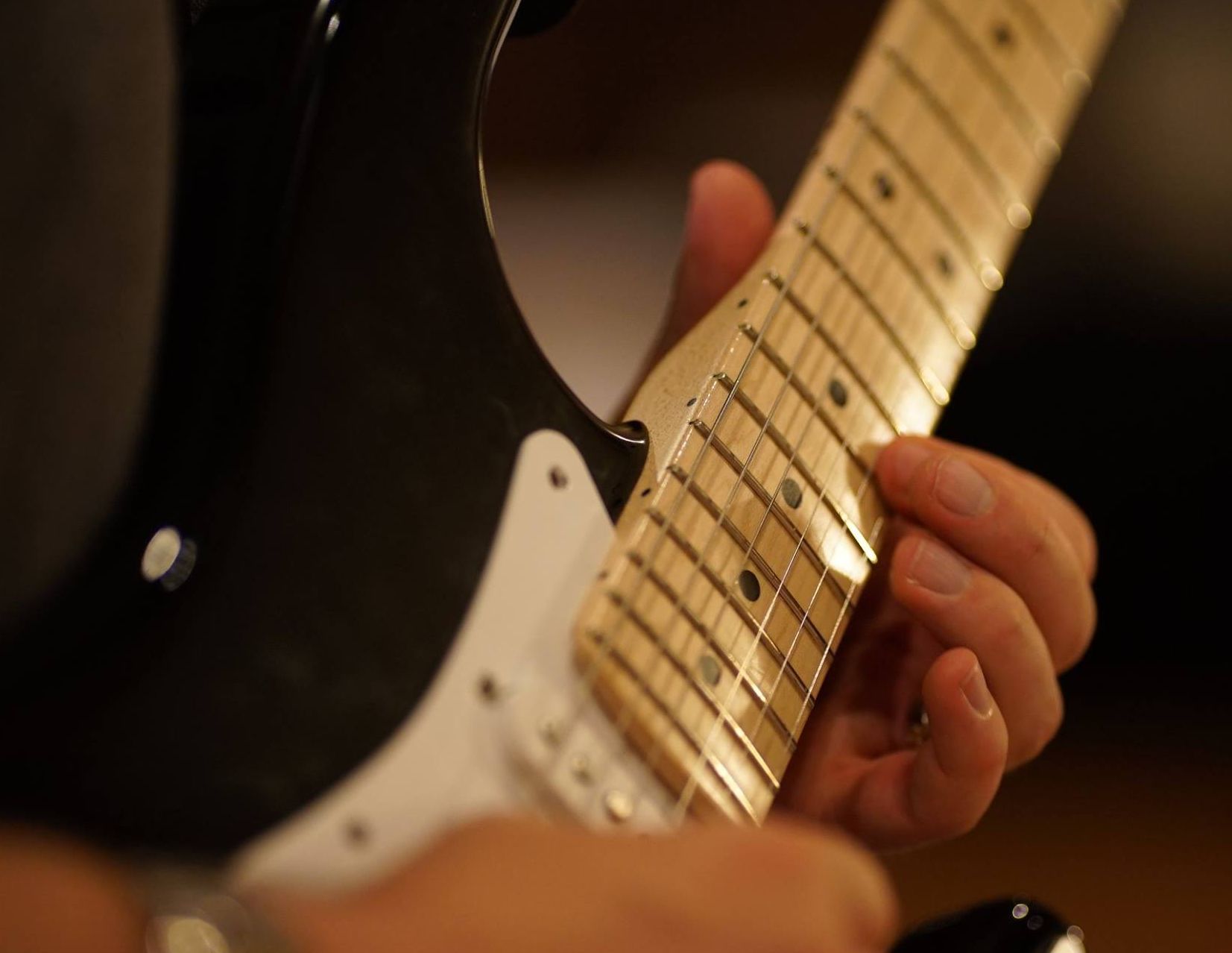How To Play The Guitar With Fast Speed In No Time With Effective Training Tips
Running out of ideas for how to get faster speed on guitar?
Good news:
It is definitely possible to become a much faster guitarist in less time than you think. Thing is, playing fast doesn’t require natural talent and most players are simply not practicing as effectively as they can.
Learning the right practice approaches helps you push yourself outside of your normal routine to expand your skills, fix problems holding you back and achieve guitar speed like you never thought possible.
Skeptical?
No problem!
Try these guitar speed tips out for yourself and watch as you get faster and faster:
Play Smaller Sized Patterns In The Beginning
It’s reasonable that you want to delve into complex guitar fretboard patterns and play some awesome solos that people admire.
Fortunately, you still can … by using practice that is more productive and less frustrating.
How?
Answer:
Master playing licks by concentrating on just a few notes at a time.
Here’s an example of how this works using a sweep picking arpeggio:
1. Choose a small sweep picking arpeggio.
2. Play the first couple of notes in an arpeggio that only ascend for one minute.
3. Practice the 2nd and 3rd notes of the pattern for another minute.
4. Practice the lick by doing the same for descending notes.
This approach makes the total practice process more simple and less frustrating because you immediately find your mistakes and practice them to quickly correct them.
It’s less frustrating too because you don’t wind up trying to play a big pattern where some parts are clean and others are not.
Question Of The Day: “My sweep picking should be clean but it isn’t! Some notes seem to be better than others though. What’s going on?”
Try this:
Focus on improving your picking articulation. Attack the notes much harder with the pick. Hit them harder to make the notes louder.
This will make your faster playing feel easier (and sound cleaner) and will make your playing sound better at any speed since you will have a lot more conviction in every note you play.
Plus, it makes any mistakes instantly obvious so you know what to fix.
Spend 10% of your practice time playing unplugged and strike the strings as hard as you physically can.
Then when you turn on distortion, you will notice how much easier it is to pick the notes at regular volume.
Quick 2-Hand Synchronization Tip:
When you are practicing a phrase and you make mistakes or your synchronization breaks down, make sure not to go back to the beginning of the phrase to play it again.
Why?
This only wastes time playing the notes you’ve already mastered.
Instead:
Isolate the part where the mistake is happening and stay on that section, finding out what is causing the problem.
Then, just play just the tough section until you get it right.
This helps you to get past your guitar playing problems faster because you will not be wasting practice time playing the parts of phrases/exercises that you can already do well.
Master The Release Of Notes Using The Fretting Hand
Want the notes of your guitar arpeggios to ring out individually with no sloppy mistakes wrecking them?
Accomplishing this demands efficient muting in both the picking hand as well as fretting hand.
Your fretting hand’s job is to keep notes from blending with each other + prevent string noise from happening on strings above.
Check out this video to see a tutorial of muting in the fretting hand:Use Your Picking Hand Thumb To Mute Unplayed Strings
Palm muting is good for playing rhythm guitar ideas, but not that good for preventing unplayed strings from playing.
It’s true!
This video clip shows how to use thumb muting to clean up sweep picking (plus picking in general):Use any other fingers on your picking hand to silence unplayed strings by lightly stationing them on the strings above (in pitch) the one you currently on.
Bonus Lead Guitar Tip: Using Creative Vibrato
Bending strings and applying vibrato on top of a bent note sounds extremely expressive.
Set aside some time in your practicing (10-15 minutes per day) to work on these two techniques.
First practice simply bending the string up into tune with no vibrato.
Make sure you can do this consistently well on half step and whole step bends.
When you can do this, practice applying vibrato SLOWLY on top of the bend.
Note: Make sure you return the bent string to its original pitch so that the note does not start sounding out of tune.
Master Rolling Technique With Effective Practice
Rolling is a special technique that makes it possible for you to rapidly play notes across many strings where the same fret is played on each string.
This is a demonstration of how to start grasping rolling technique using arpeggios:Learn more ways to Get started by studying this guitar soloing guide.
